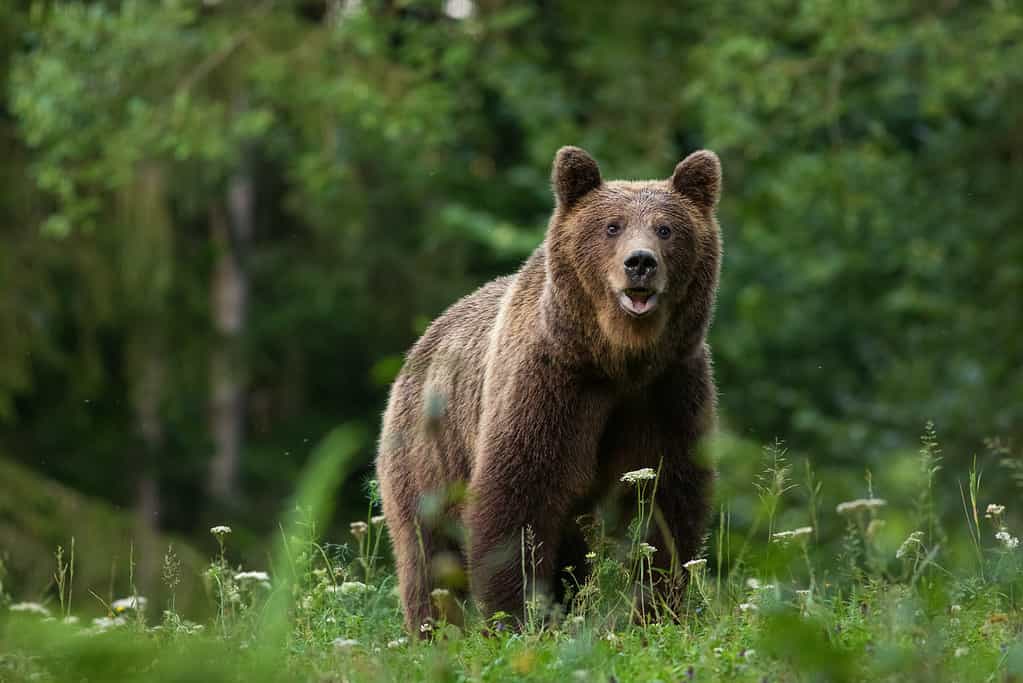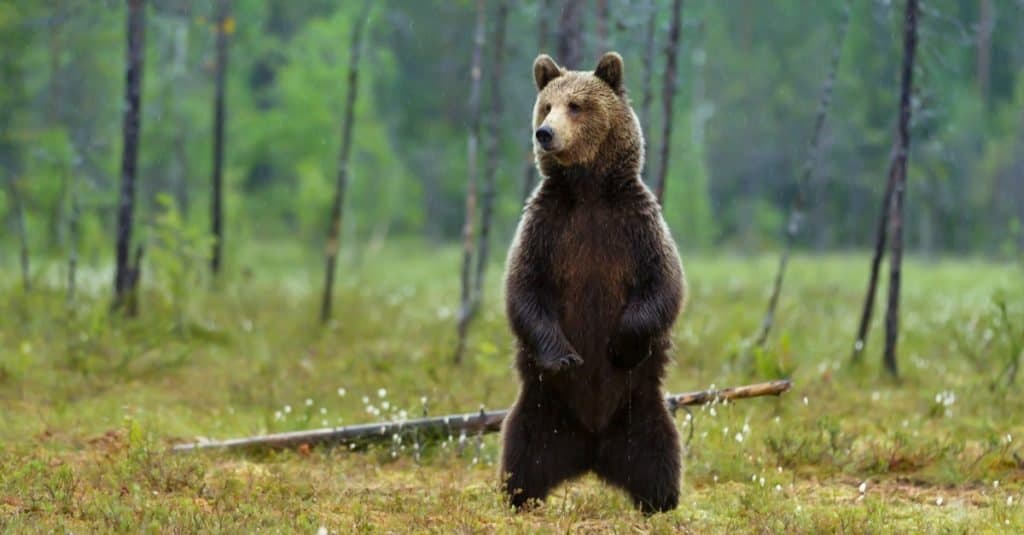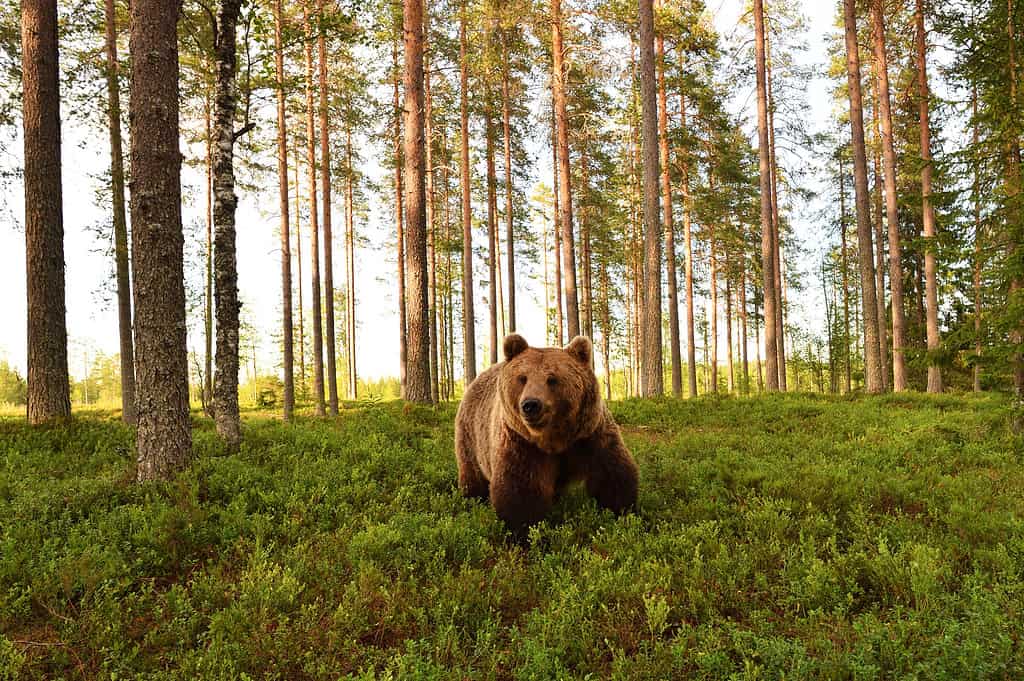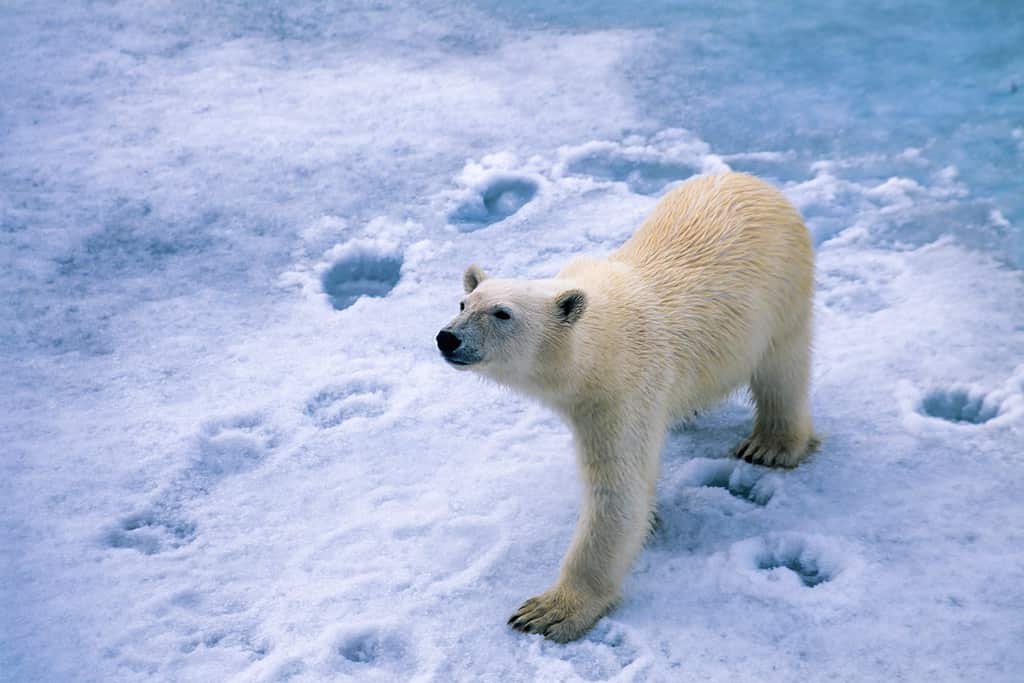Bears have roamed the world for centuries and continue to frequent the Earth today. Ultimately, there are bears everywhere, from the United States to Canada. They are powerful and majestic creatures that have survived numerous decades all over the planet.
There are also many bears in Europe, and there are several places where you can find them along the continent in varying numbers. Significantly, you can find them in several countries. But where are the bears? Also, how many of them frequent the continent, and are there several different variations? We are here to bring you the facts and provide information on where you can find bears in Europe and how many you may find.

Carpathian brown bears enjoy the woods of Romania and are frequent in the region.
©DrDjJanek/iStock via Getty Images
Species Profile: Bears
Bears are among the largest land animals on the planet. Amazingly, some bears can be nine feet long when standing on their hind legs. You will likely find them in the forests or mountainous regional areas. Significantly, they stand out because of their large teeth, strong paws, and rough body. Bears also have only three natural predators; the only creatures that attack them are wildcats and wolves. Additionally, there are eight different types of bear species, and they can live anywhere between 15 to 35 years. Bears can weigh up to 1,500 pounds and also run as fast as 35 miles per hour.
Weird Facts About Bears
Bears have many unique characteristics that separate them from other animals. Curiously, small cubs have often wandered away when something caught their eye. They are curious creatures, and mother bears often have to guard them to prevent their cubs from getting into trouble. Furthermore, mother bears often resort to spanking or slapping their cubs to help them behave.
Brown bears cannot climb trees. Yes, you read that correctly. They have this ability to climb when they are younger cubs. However, the larger they get, the tougher it is for them to climb trees, as their weight makes them too heavy to climb up.
Bears that are omnivores enjoy berries. Ultimately, berries are among their favorite foods, along with herbs and fruits.

The Eurasian bear can stand on its hind feet to pick berries and other food with its paws.
©Giedriius/Shutterstock.com
History of Bears in Europe
Bears have existed across Europe as early as the Middle Ages, according to Euronatur. Mainly, they were all across the continent, as there were numerous forests across the region. Things have changed over the last few centuries as humans have slowly taken over the territory, forcing the bears into retreat. Moreover, there are roads where the bears once existed.
But the first official record of bears occurred around five million years ago. Interestingly, the bears that existed during this timeframe were smaller than the animals that inhabit today’s planet.
There were allegedly 13,000 brown bears existing in London at one point in time. However, the expansion of humans and the industrial age helped eradicate these animals. They no longer exist in England due to these factors, as they went extinct approximately 1,000 years ago. Unfortunately, they lost most of their forested habitat and could not recover it.
The giant cave bear was another animal that lived in Europe for a few thousand years, according to the North American Bear Center. Sadly, they went extinct approximately 10,000 years ago. Researchers discovered the remains of this animal in Austria across several Drachenhohle caves. Additionally, they believe the cave bears died during cold winters because of a lack of food. These bears were as large and massive as the Alaskan brown bear. Furthermore, scientists believed they fed on vegetation.
The giant panda bear also once allegedly lived in Europe. Moreover, scientists believe they went extinct in the region approximately six million years ago.
What Countries in Europe Do Bears Exist?
You can find bears all across the European continent. Specifically, you can see them across Romania and Bosnia. You also may see bears in Slovakia and Slovenia. Bears also thrive in big populations in Bulgaria, Poland, and Turkey.
Bears also exist in smaller populations across Greece and Serbia. Likewise, you may encounter bears in Albania and Montenegro. These countries all have similar lush environments which allow bears to thrive.
What Kind of Bears in Europe Exist?
There are two species of bears you will find across the European continent. Significantly, all have a specific feature that makes them unique.
The brown bear is the most common species you will find in Europe. Ultimately, they are curious animals that have incredible imaginations, according to the World Wildlife Fund. The WWF reports that there are approximately 110,000 brown bears in the wild. Additionally, they play an integral role in the population control of other animals.
The Eurasian brown bear is a subspecies of the brown bears you will find in Europe. Substantially, they are bears you will only find across Europe and Asia. Eurasian bears usually look for food in the morning and evening, according to the Plumpton Park Zoo. Also, Eurasian brown bears are omnivores, like other brown bears, and will eat whatever they can find. Their non-meat diet includes honey, berries, apples, nuts, and plums. Of course, they also eat other smaller mammals. Eurasian brown bears usually live 20 to 30 years in the wild.

The Eurasian brown bear is a subspecies of the brown bears you will find in Europe.
©ErikMandre/iStock via Getty Images
Polar bears also frequent the colder parts of Europe. Significantly, you may find them in Greenland and Russia. Unlike other bears, polar bears have a slightly different diet, as they are strictly carnivores. Polar bears often enjoy hunting seals and walruses. Additionally, there are approximately 20,000 to 50,000 polar bears in the wild. Their skin is clear white, and live among coastal ice fields and floating ice. Also, polar bears can live anywhere between 20 to 30 years in the wild. They are the most sparse of the bears in Europe and are critically endangered.

Polar bears live in the colder region of Europe.
©Lasse Johansson/Shutterstock.com
How Many Bears in Europe Exist Today?
Numbers can vary. Ultimately, there are approximately 22,000 bears in Europe. You will likely see about 17,000 brown bears living across the continent, according to the WWF. Additionally, you will see about 3,000 polar bears living in Europe, specifically on the Norwegian island of Svalbard. There are also about 2,000 that inhibit Greenland.
Relationship With Humans
Bears and humans have always had a complex relationship, according to the National Park Service. Amazingly, the history goes back to the Roman Empire and continues in some form today. Humans have often used bears for circuses and in zoos. However, recent times have seen a decline in that.
Brown bears are curious animals and generally timid. However, they will attack a human if they believe they are threatening them or their cubs. But brown bears prefer to avoid making contact with humans to begin with. Additionally, once their curiosity has ended, they may leave without warning.
Polar bears rarely encounter humans. Regardless, they are much more aggressive toward humans. There have been over 20 attacks on humans over the last few years, according to the WWF Arctic. Mainly, these attacks are happening on explorers and those who have scientific expeditions in colder climates.
There are several precautions you can take if you encounter a bear in Europe or anywhere in the world. First, it is important to remain calm. Panicking can cause the bear to react to the panic and charge you. Overall, bears just want to be left alone and do not want to encounter humans or anything else.
Talking to the bear calmly also helps prevent them from reacting aggressively. Additionally, making yourself look as large as possible is an efficient way to discourage the bear from attacking. Do not run whatsoever. Unfortunately, running away may cause the bear’s natural instincts to rise and for it to chase you. The best method for avoiding an attack is to back away slowly while remaining calm.
The relationship between bears and humans continues to evolve. Consequently, there are not as many bears left in the wild as there were thousands of years ago. But bears in Europe are still managing to survive and will do anything to prosper.
The photo featured at the top of this post is © Byrdyak/ via Getty Images
Thank you for reading! Have some feedback for us? Contact the AZ Animals editorial team.







